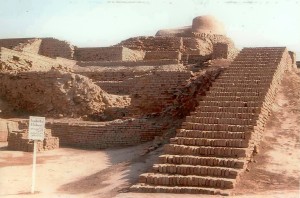UNESCO refuses to extend World Heritage status to three sites in Pakistan
Monday, March 19th, 2012 5:17:45 by Naveed A Bari
UNESCO refuses to extend World Heritage status to three sites in Pakistan
The United Nations Educational, Scientific and Cultural Organisation (Unesco) has now declined Pakistan’s request to extend World Heritage status to three of the ten entries Pakistan filed for in the year 2010. UNESCO has already awarded several
World Heritage status to the historical and archeological sites in the country, the last being the Rohtas Fort in Jehlum.
The three unfortunate sites which failed to win the status included 7,000 BC Mehergarh in Baluchistan, one of the most important Neolithic sites in archaeology, the pre-Harappa 4,000 BC Rehman Dheri in Khyber Pakhtunkhwa and the 2,600 BC Harappa site in
Punjab, with one of the most fascinating and mysterious cultures of the world.
“There is certain criterion that must be met before Unesco inducts the sites into the world heritage list. Sadly, none of the sites fulfill world standard requirements,” said an official with Unesco, explaining how Pakistan had committed to support the UN
body in its resolve to promote diversity of cultures.
The department of Department of Museums and Archaeology (DOAM) also confirmed the absence of basic facilities at these sites especially Mehrgarh which is located in the restive Sibi district does not even have a road which would lead to it.
Mehrgarh is the oldest archeological discoveries in the country and dates back to the Stone age in Neolithic period.
According to the department, Mehergarh, sitting between Quetta and Sibbi, was first excavated in early 1970s that continued till 1985-86 and then stopped. The evidence collected was thoroughly investigated and studied.
According to DOAM, most of the ancient sites have only been 10 per cent excavated. The official explained that once evidence was removed from an important site, it was damaged.
“In most cases, it is better to leave the sites buried until there is right technology available and resources to unearth hidden architecture. May be future generations will have more resources and improved technology to unearth mysteries of the past,” the
official explained.
“A town sits over the original site. However, some open area had been acquired outside the settlement where most of architecture was still buried. These sites enjoy living tourism as we call it. There are basic facilities and the few missing can be developed,”
said the official, pointing out that now the responsibility fell on the provinces to push Unesco to recognize these historical architectures.
Short URL: https://www.newspakistan.pk/?p=16285


















People of the Indian Sub-continent have no history; only anecdotes and hearsay on the basis of caste, creed, religion and tribe !